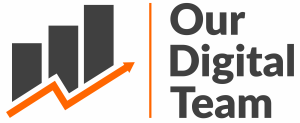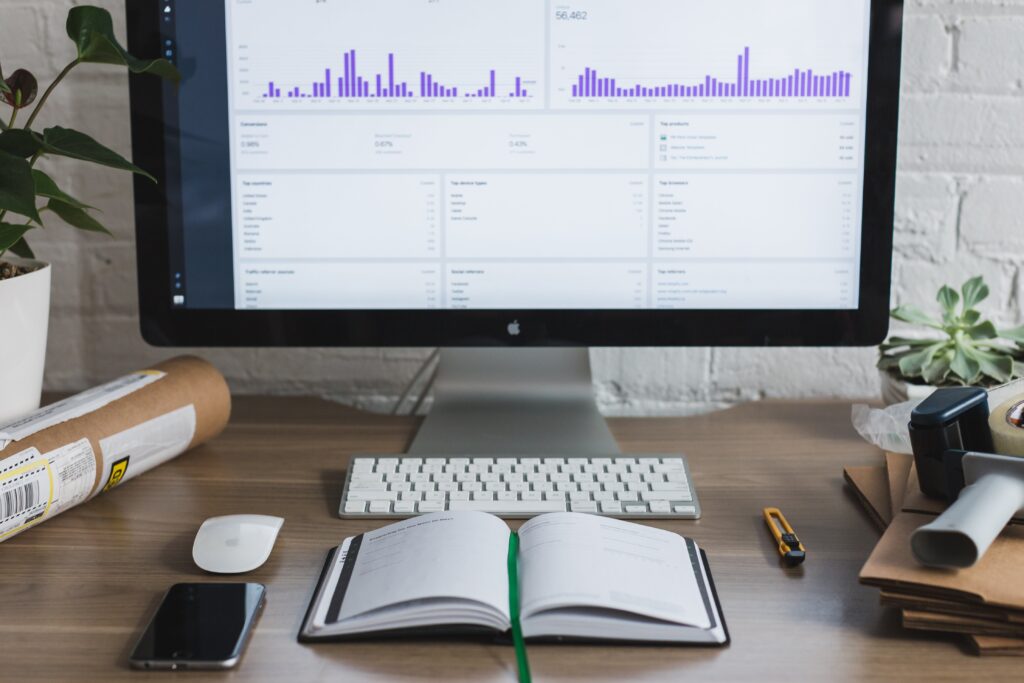Search engines like Google use hundreds of factors when it comes to ranking a page on search results. Some examples of ranking factors include page speed, domain authority, user experience, links and SEO. SEO which stands for search engine optimisation is the process of enhancing your site to make it more visible to high quality traffic. Shopify SEO best practises are particular activities that are most likely to improve a site’s website ranking on search engine results.
- Keyword research
- Keyword targeting
- Compelling content
- Fast site load speed
- Links
- Monitoring results (Google Search Console)
Keyword research
One of the many reasons that Google is such an effective search engine is because it has an algorithm that does the hard work for you. When you type in a search term, Google searches our web pages that contain the keywords used in your search. Once Google has identified the appropriate pages, it ranks them based on a number of factors to provide you with the best fitting response to your search query. This is why keywords are such an important element of SEO.
Keyword research is crucial in driving high quality traffic to your website. The purpose of keyword research is to understand the search intent of your target audience. Once you have gathered this data, you will be able to identify which keywords you need to target. Once you know what users are searching for you should be able to align your content to match. From here Google’s algorithm will be able to identify your content as being relevant to your target audience and their search queries. Thus improving the chances of your website ranking higher on search engines.
Common types of search intent:
- Informational- searches for specific information
- Navigational- looking for specific website or app
- Commercial- looking for a product but hasn’t made decision yet
- Transactional- intent is to buy, the searcher has made the decision to make the purchase
Targeting the keyword
Once you have identified which keyword or key term you want to target, the next step on the list of Shopify SEO best practises is to make sure you optimise your content effectively for this keyword. There are a number of ways to do this but the general rule of thumb is that the more times a keyword is used, the more likely Google’s algorithm will pick it up as being relevant. However, like anything you can have too much of a good thing. If you use the keyword too frequently within your content, Google may flag it as spammy for keyword stuffing.
Where to use keywords for Shopify SEO:
- Page titles
- Meta descriptions
- Subheadings
- Body
- Images
- URLs
Compelling content
We’ve already taken a look at Google’s impressive algorithm, but Google’s ranking factors go beyond keyword targeting. Google keeps a close eye on user experience as a ranking factor. This means that creating compelling content is equally as important as creating keyword optimised content, the difficult part is making content that ticks both of those boxes.
There are a number of ways to ensure a user has a good experience when visiting your website:
- Aesthetically pleasing content
- Eye catching visuals
- Easy to read
- Avoiding intrusive pop ups
- Use of white space
- Quick load speed
The reason why you want to ensure your content is compelling is because if not, users will quickly leave your site. This will lead to an increased bounce rate. Although bounce rate isn’t a main factor that directly affects organic rankings, it is still important to try and maintain a low bounce rate and high time on page as this signifies your content is relevant and useful to readers. If your site visitors do not bounce and spend a longer time on your site the chances are they are more likely to convert.
Fast load speed
Another best practise of Shopify SEO is optimising your load speed. This goes back to Google’s ranking factor of user experience. Page load speed is a primary ranking factor so it is important to get it right. People are impatient and no one has the time to wait for a site that takes ages to load. If you have a page with a slow load speed users will become frustrated and your rankings will drop off. On the other hand if your page loads quickly and efficiently users are more likely to have a better experience.
Google’s recommended page load speed is under 2 seconds with statistics showing that 53% of mobile visits are abandoned if a page takes over 3 seconds to load. This begs the question, how do you improve your Shopify sites loading speed?
How to reduce page load time:
- Choose a well performing hosting solution
- Compress files
- Reduce redirects
- Remove unnecessary plugins/ addons
- Too many ads
- Cache web pages
- Simplify web design
Links
When it comes to links there are two different categories in terms of SEO- ‘internal links’ and ‘external links’. Establishing both types of links is a very important ranking factor therefore paramount in Shopify SEO.
Internal links
Let’s discuss the easier type of links first, ‘internal links’. These are links that establish an information hierarchy for your website by signalling to Google which pages are most important. They also help Google to gain a deeper understanding of your content. When used correctly, internal links are a great way to significantly improve your site’s rankings.
If you have links within your site that link to other pages within your site that no longer exist, this can have a negative impact on your Shopify SEO. A digital marketing agency like Our Digital Team can help you fix broken links by running a site SEO health check to identify broken links and repair them.
External links
Another key ranking factor is external links also called ‘backlinks’. External links are important because they increase the authority of your website- put simply Google recognises these links as votes of confidence. So, the more high quality links you have, the better your chances are of ranking well in search results. However, it’s important to note that not all external links are seen as equal, that is why securing high quality links from authority sources is the best way to achieve good results.
Monitoring results
Our final tip in our list of Shopify SEO best practises is to track and monitor your results. A good way to do this is using digital marketing tools, an effective one being Google Search Console. This tool allows you to see a live dashboard of your site’s performance in Google’ search engine results. There are a number of great features in Google search console, but some are more important to check regularly than others.
Google Search Console reports to monitor regularly:
- Performance
- Coverage
- Enhancements
Still want more Shopify SEO assistance?
If you want to do all of this but feel that you don’t have the time, experience or expertise to do Shopify SEO effectively Our Digital Team is here to help.
We are a team of award winning marketing professionals with years of experience in the digital industry behind us. We are official Shopify partners and have worked with a number of Shopify merchants to improve their search visibility, conversion rates and even supported expansion into new markets such as the USA.
To arrange a free 15 minute consultation regarding your Shopify store please do not hesitate to contact us.

